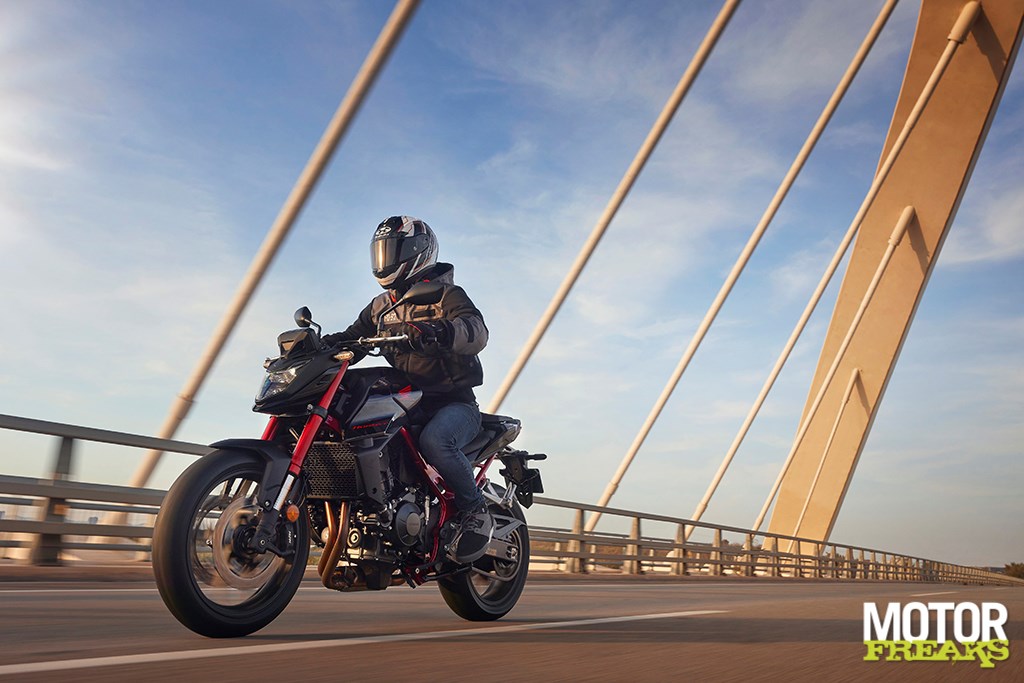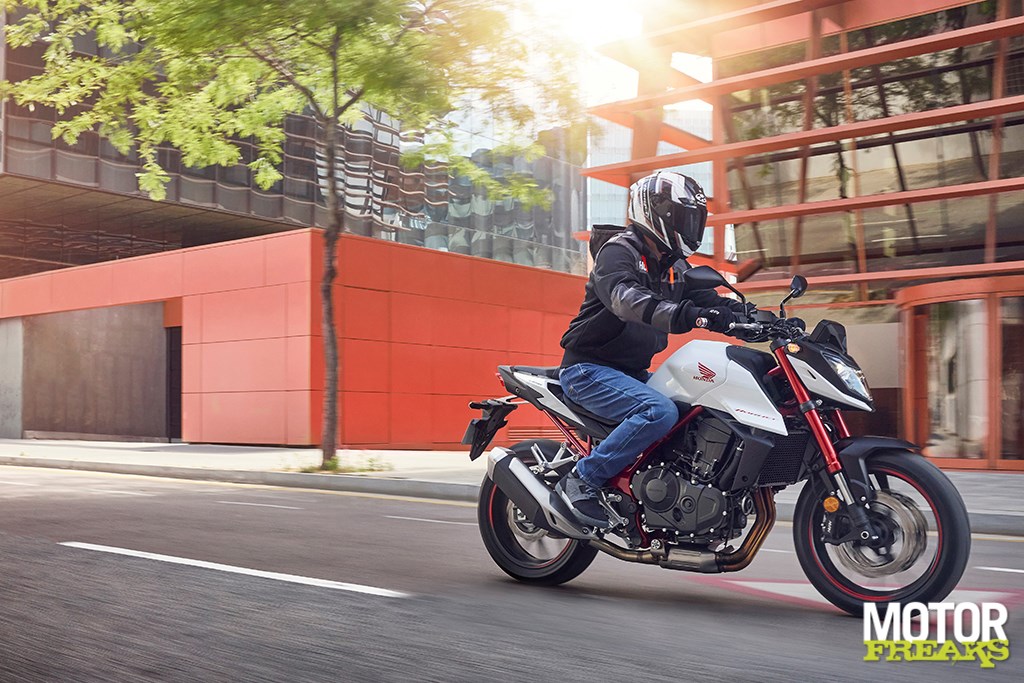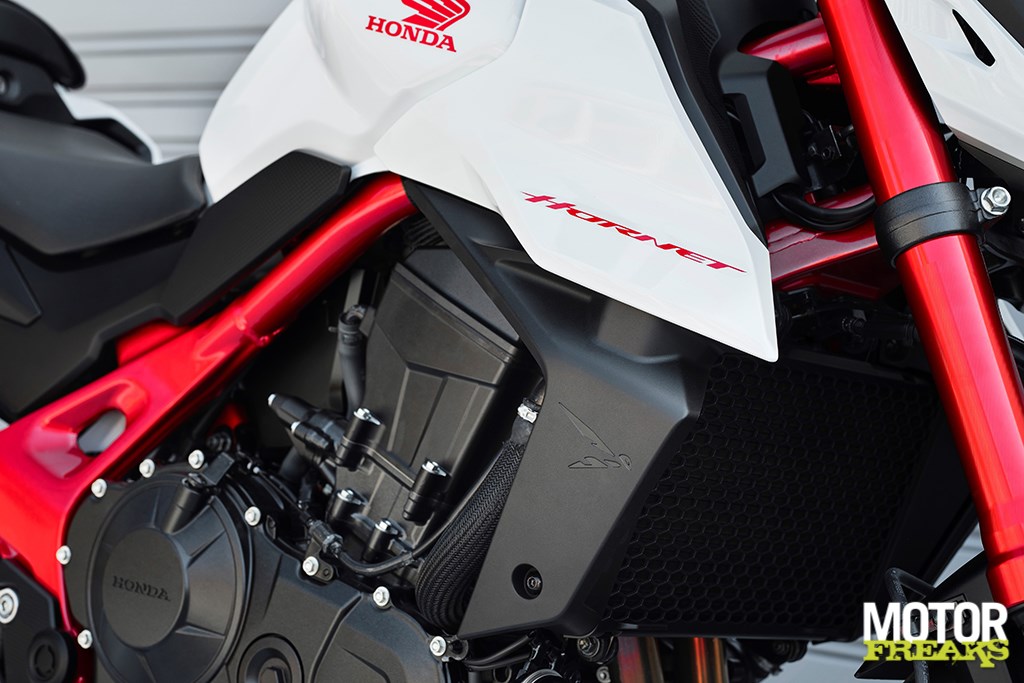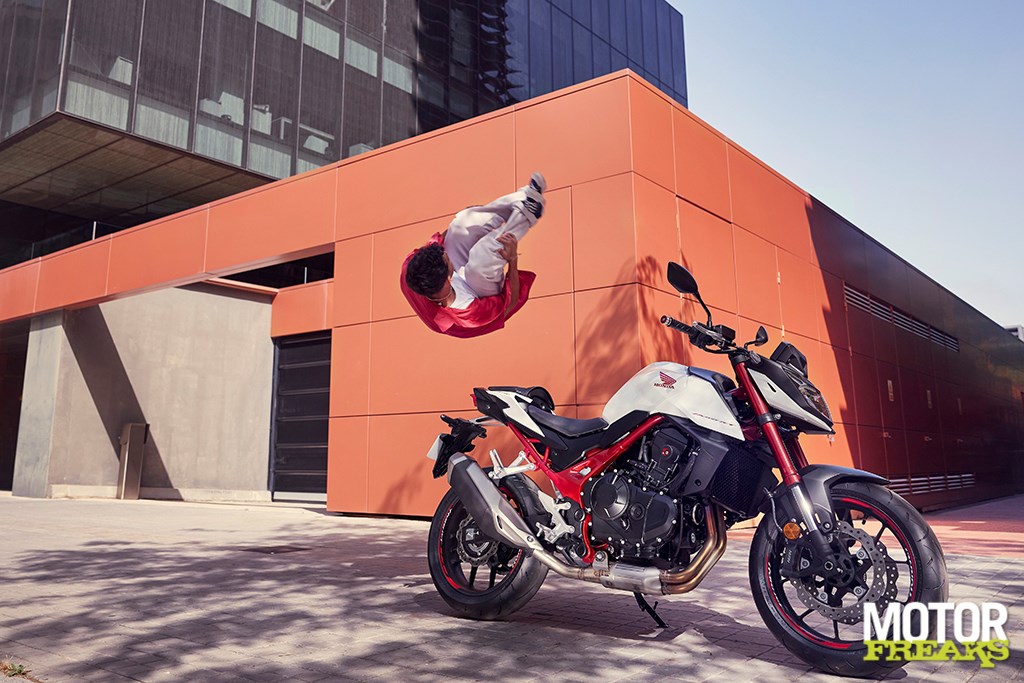Honda has lifted the curtain on the new already announced CB750 Hornet. The new Hornet is powered by a 755cc parallel twin with 270° crankshaft and Unicam valve train, good for a top power of 92 hp and equipped with electronic aids such as traction control, with a stated curb weight of 190 kilos.

We’ve been eagerly awaiting the revival of the Honda Hornet, announced by Big Red some time ago and teased ever since with snippets of information, from design concepts to the specs of the 270° parallel twin.
To start right away with the latter. The CB750 Hornet, as it’s officially christened, is powered by an all-new 755cc inline two-cylinder engine, whose crank pins are spaced 270° to give the engine a 90° V-twin firing order. Indeed, just like Honda has done with the Africa Twin.
Honda claims a top power of 67.5 kW (Honda is the only brand to only give the power figures in kW) according to the pocket Japanese 92 hp, which is delivered at 9,500 rpm. The maximum torque of 75 Nm is already delivered at 7,250 rpm. Honda claims a top speed of 205 km/h and a fuel consumption of 4.35 liters / 100 km, or 1 in 23. With 15.2 liters of fuel, that provides a range of just under 350 kilometers.
For the sharpest possible throttle response, Honda has invented and patented something new for the airbox: Vortex Flow Ducts, which are designed to distribute the air evenly in the airbox, from which the air flows through downdraft inlets and 46mm throttle bodies to the cylinders. .
The cylinders are provided with a Ni-Sic (Nickel-Silicon Carbide) coating, as also used on the Fireblade and CRF450R. Honda has also adopted the Unicam valve train from the latter model. A slip/assist clutch, with angled disc elements, provides a light feel in the clutch and should prevent the rear wheel from bouncing under hard braking and too rapid downshifts.
In terms of electronics, Honda has equipped the CB750 Hornet with 3 riding modes: Rain, Standard and Sport, with three levels of engine power, engine braking and HSTC traction control with integrated wheelie control. In a 4th User mode, everything can still be adjusted to your own taste and smell.
The differences between the 3 driving modes? Sport uses level 3 EP (Engine Power), level 1 EB (Engine Brake) and level 1 HSTC (Honda Selectable Torque Control), with Standard the golden mean has been chosen for all three (EP, EB, HSTC), or level 2, where in Rain mode it has been chosen for the lowest EP setting (level 1) with the least aggressive power delivery, level 2 for EB and 3 for HSTC. For those who want otherwise, there is the User mode, in which the traction control can also be turned off.

Then the bicycle part. Looking at the dimensions, it can hardly be otherwise than that the CB500 has been the starting point for this CB750 Hornet, as incredibly small as the differences are. To illustrate, the CB750 has a wheelbase of 1,420mm, with a 25° head angle and 99mm trail, while the CB500 has 1,510mm, 25.5° and 102mm.
Both have a wonderfully accessible seat height of 785 mm and in terms of overall dimensions the seven and a half is only slightly larger than the five hundred: 2,090 mm length by 1,085 mm height for the 750 versus 2,080 mm length and 1,060 mm height for the 500. 790 mm wide and have a curb weight of 190 kg. Oh yes, the wheel and tire sizes are also identical: 120/70 ZR 17″ at the front and 160/60 ZR 17″ at the rear.
The only visible difference is at the front, where Honda has now fitted a 41mm Showa SFF-BP upside down fork. If that SFF-BP means nothing to you: BP stands for a Big Piston construction, a large piston that controls the damping, and SFF stands for a separate function of suspension and damping. One molded leg therefore provides the suspension, the other provides the damping. Suspension travel is 130 mm at the front, 150 mm at the rear.
Another difference at the front: where the CB500 only has a single 320 mm disc in the front wheel, with a 2-piston caliper, this CB750 Hornet uses double discs, although they are slightly smaller in diameter at 298 mm. Beautiful Nissin 4-piston radial calipers are now also fitted.
Without even having ridden a meter on the CB750 Hornet, we can already say that the bike will steer just as easily and quickly as the CB500, where we once visited in the gray past, when Honda still held an annual event at our Oosterburen organized where we were allowed to unabashedly bark all available models, the German equivalent of the Isle of Man TT took part. Back when no one cared about antisocial driving.

Convinced that a CB500, equipped with 92 hp 270° parallel twin, will be quite a fun package, we find it all the more a pity that Honda has not extended that to the design, but has given the Hornet the appearance of a salt stalk . Not an aggressive wasp, but a hay bug, which has the name of being a boring insect. While looking at the specs he really does have the ingredients of that aggressive wasp.
It’s not the color schemes, the white with red frame and black with red frame are well chosen and the tank including side panel and the rear don’t look wrong at all, but that headlight … seriously? Couldn’t it have been better thought of? But hey, nothing you can argue about as much as about taste.
As dull as the nose looks, the good news is that you won’t see any of that once you’re driving, unlike the display right under your nose. And let Honda have really unpacked there, with a particularly beautiful TFT color display with 4! types of speed/rpm display, as well as fuel gauge/consumption, driving mode selection/engine parameters, gear and shift indicator.
Connecting to your smartphone via Bluetooth is no longer the case, and they apparently noticed that at Honda too, and so this Hornet is also equipped with the Honda Smartphone Voice Control system that has already been used on, among other things, the CB1000R and Africa Twin has been used. HSVC enables voice management of phone calls, messages, music and navigation. Provided of course you have a headset in your helmet.

The 2023 Honda CB750 Hornet will be available in the colors white (with red frame), black (with red frame) and yellow (with black frame). Of course Honda has already developed a laundry list of accessories for the Hornet, including soft case side bags and a quickshifter, but for those who are too complicated, Honda has put together 3 packages: Sport, Style and Tour.
In addition to a quickshifter, the Sport package houses a windshield, pillion seat cover and rider footpegs, the Style package includes bar-end weights, a sleek handlebar clamp, tank pad, wheel stripes and crash pads. Finally, the Tour package, in which – how could it be otherwise – the side bags, tank bag and saddle bag are housed.
– Thanks for information from Motorfreaks.